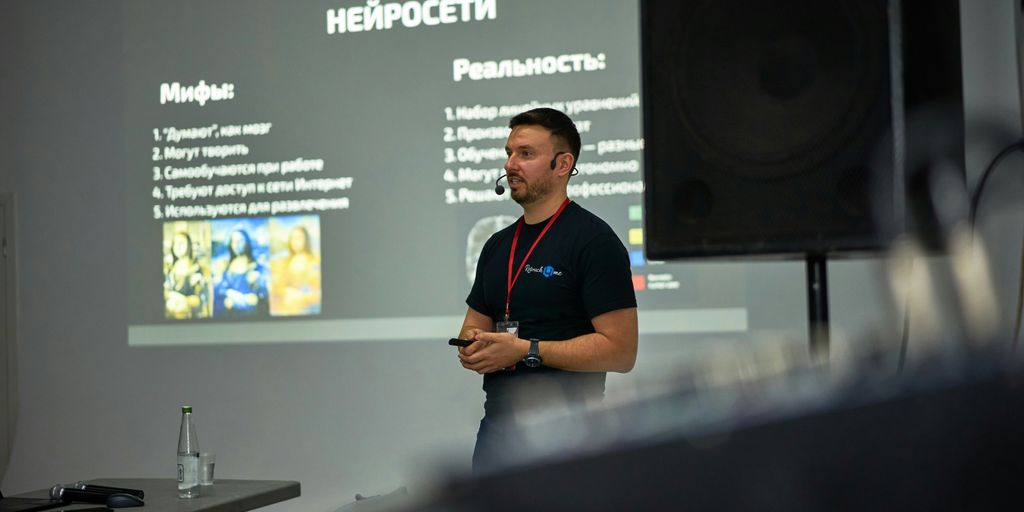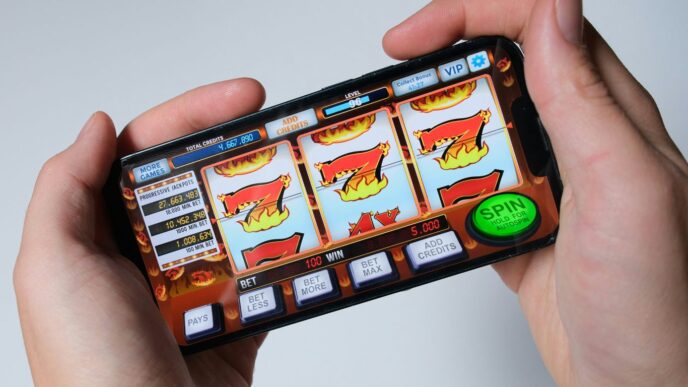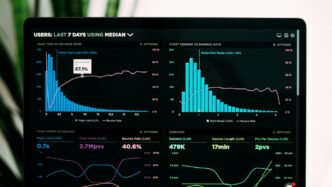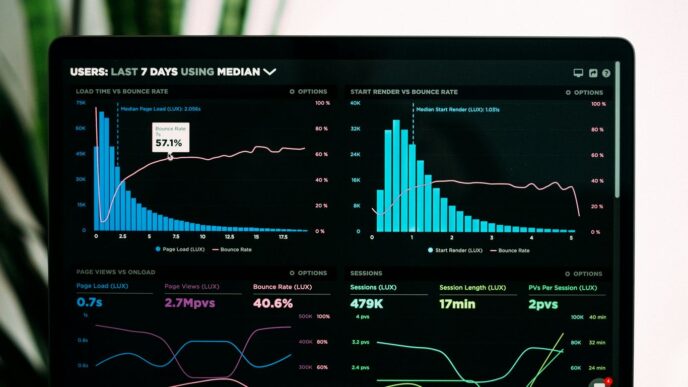So, 2025 is just around the corner, and if you’re thinking about how to really connect with people online, webinar content marketing is a big deal. It’s not just about putting on a presentation; it’s about making real connections and showing what you know. This guide will walk you through everything, making sure your webinars hit the mark and help your business grow. We’ll cover how to plan, put on, and follow up on your webinars, so they actually do something for you.
Key Takeaways
- Webinars help you find the right people and keep them interested, making sure your message gets to those who really care.
- Good webinar content makes your live events better and helps your brand stay strong long after the event is over.
- To make your webinars work, you need to pick good topics, create interesting presentations, and tell people about them everywhere.
- Making sure your webinar runs smoothly means using good tech, having ready speakers, and getting the audience involved live.
- After the webinar, turn it into other stuff like articles or short videos, and then follow up with attendees to keep them engaged.
The Strategic Imperative of Webinar Content Marketing

Webinars are a big deal right now. They let you connect with people in real-time, which is way more engaging than just reading a blog post. Plus, you can get a ton of useful info from them to help you figure out what your audience really wants. Webinar content marketing is now a must-have for any company that wants to stay competitive.
Attracting Qualified Audiences
It’s not just about getting a ton of people to sign up; it’s about getting the right people. You want folks who are actually interested in what you have to say and are likely to become customers. Think of it like this: would you rather have 1000 random people at your webinar, or 100 people who are seriously considering buying your product? I’d take the 100 any day. Targeted content is key. Make sure your webinar description and promotional materials clearly state who the webinar is for and what they’ll get out of it. This way, you’ll attract a qualified audience that’s genuinely interested.
Enhancing Event Experience
Let’s be honest, some webinars are just plain boring. Don’t let yours be one of them! Keep people engaged. Use polls, Q&A sessions, and even short videos to break things up. The more interactive you make it, the more likely people are to stick around and actually pay attention. Here are some ideas:
- Live demos of your product
- Guest speakers who are experts in the field
- Interactive quizzes to test people’s knowledge
Extending Brand Impact
Your webinar doesn’t have to disappear after it’s over. Repurpose that content! Turn it into blog posts, social media snippets, or even a series of short videos. This way, you can keep the conversation going long after the live event. Think of your webinar as the gift that keeps on giving. By creating evergreen content, you can extend brand impact and continue to engage with your audience for months to come. This helps maintain engagement and nurture long-term relationships with your target audience.
Crafting Compelling Webinar Content
Identifying Your Target Audience
Okay, so you want to make a webinar that people actually want to watch? First, you gotta know who you’re talking to. I mean, seriously. Are you aiming for seasoned pros, or folks just starting out? What are their biggest headaches? What keeps them up at night? Really understanding your audience is the first step. Think about things like their job titles, industry, experience level, and what they’re hoping to get out of the webinar. This will help you tailor your message and make sure it actually hits home. You can use surveys, social media polls, or even just talk to people in your target market to get a better sense of their needs. Don’t skip this step – it’s the foundation for everything else. You might want to consider using audience segmentation to better understand your audience.
Choosing Engaging Topics
Alright, you know who you’re talking to. Now what are you going to say? This is where the rubber meets the road. You need a topic that’s both relevant to your audience and something you can actually talk about with some authority. Don’t just pick something trendy – think about what problems you can solve for your audience, what questions you can answer, and what insights you can share. Here are some ideas:
- Solve a specific problem: What’s a common challenge your audience faces? Can you offer a practical solution?
- Share insider secrets: What knowledge do you have that others don’t? Can you give them a peek behind the curtain?
- Debunk common myths: Are there any misconceptions in your industry? Can you set the record straight?
- Predict future trends: What’s on the horizon? Can you help your audience prepare for what’s next?
Make sure your topic is specific enough to be manageable in a webinar format, but broad enough to be interesting. And most importantly, make sure it’s something you’re passionate about. That enthusiasm will come through and make your webinar way more engaging. Think about how you can create compelling content that will keep your audience hooked.
Developing Interactive Presentations
Nobody wants to sit through a boring lecture. Seriously. If you want to keep your audience engaged, you need to make your presentation interactive. That means more than just talking at them for an hour. Think about ways to get them involved, ask questions, and participate in the discussion. Here are some ideas:
- Polls: Ask your audience questions throughout the presentation to get their opinions and insights.
- Q&A: Dedicate time for a Q&A session at the end of the webinar to answer questions and address concerns.
- Chat: Encourage your audience to chat with each other and with you during the presentation.
- Case studies: Share real-world examples of how your topic has helped others.
- Live demos: If possible, show your audience how to do something in real-time.
And don’t forget the visuals! Use slides, videos, and other multimedia elements to keep your audience’s attention. But don’t overdo it – keep your slides clean and simple, and make sure your visuals are relevant to your message. The goal is to enhance event experience, not distract from it.
Promoting Your Webinar for Maximum Reach
Okay, so you’ve got this awesome webinar planned. Great! But nobody will watch it if they don’t know about it, right? Let’s talk promotion. It’s not enough to just build it; you gotta get the word out. Think of it like throwing a party – you need to send out invites!
Leveraging Digital Marketing Channels
Time to put on your marketing hat. Think about all the places your target audience hangs out online. Are they on LinkedIn? Facebook? Maybe they’re all about Twitter (or X, whatever it’s called now). You need to be there too.
- Social Media Blitz: Create some eye-catching posts with a link to your registration page. Use relevant hashtags to reach a wider audience. Run some targeted ads if you have the budget. Don’t just post once; keep the reminders coming!
- Email Marketing: This is still a powerhouse. Send out a series of emails to your list, highlighting the benefits of attending your webinar. Segment your list if you can, so you’re sending the most relevant message to each group.
- Content Marketing: Write blog posts, create short videos, or even record a podcast episode related to your webinar topic. Include a call to action to register for the webinar. Think of it as content marketing agencies working for you, even before the webinar happens.
Optimizing Registration Landing Pages
Your landing page is where the magic happens. It’s where people decide whether or not to sign up. So, make it good!
- Clear and Concise: Tell people exactly what the webinar is about and what they’ll get out of it. Use bullet points to highlight key benefits.
- Compelling Headline: Grab their attention right away. Make it something that speaks to their pain points or interests.
- Easy Registration: Keep the form short and sweet. Only ask for the information you absolutely need. Nobody wants to fill out a novel just to sign up for a webinar.
- Mobile-Friendly: Make sure your landing page looks good on all devices. A lot of people will be signing up from their phones.
Building Pre-Event Excitement
Don’t just promote the webinar and then go silent. Keep the buzz going! You want people to be excited to attend.
- Teaser Content: Share snippets of what you’ll be covering in the webinar. Post a short video of the presenter introducing themselves.
- Engage on Social Media: Ask questions related to the webinar topic. Run polls. Get people talking.
- Send Reminder Emails: Send a reminder email a few days before the webinar, and another one a few hours before. Include a link to the webinar room.
- Offer a Sneak Peek: If you have some bonus material, like a checklist or a template, offer it to people who register early. This incentivizes them to sign up sooner rather than later. Remember, a little anticipation goes a long way!
Ensuring Seamless Webinar Execution
Selecting Reliable Webinar Platforms
Okay, so you’ve got your content, you’ve got your audience, now you need a place to actually hold the webinar. Picking the right platform is more important than people think. It’s not just about whether it looks pretty; it’s about reliability. You want a platform that won’t crash mid-presentation or have attendees struggling to log in. Think about features like screen sharing, chat, polling, and Q&A. Does it integrate with your existing marketing tools? What’s their customer support like if something does go wrong? Don’t just go for the cheapest option; read reviews, do trials, and make sure it fits your needs. I remember one time we used a platform that kept kicking people out – total disaster!
Preparing Expert Presenters
Having a knowledgeable presenter is key, but being knowledgeable isn’t enough. They need to be engaging, comfortable on camera, and able to handle questions on the fly. Run through the presentation multiple times. Do a tech check beforehand to make sure their audio and video are working. Give them clear guidelines on timing and what you expect from them. Also, prep them with potential questions they might get asked. It’s also a good idea to have a backup presenter in case something happens. You can enhance brand awareness by having a well-prepared presenter.
Fostering Live Audience Engagement
A webinar shouldn’t be a one-way lecture. You want to get people involved! Here are some ideas:
- Q&A Sessions: Dedicate time for questions. Encourage people to submit them throughout the webinar.
- Polls: Throw in some polls to keep people awake and get their opinions. It’s a great way to gather data too.
- Chat: Encourage people to use the chat function to share their thoughts and network with each other.
- Interactive Exercises: If it fits your topic, include a short activity or exercise that people can do during the webinar.
Don’t be afraid to call people out by name (if they’ve given permission, of course) and acknowledge their comments. Make it feel like a conversation, not a broadcast. You can use webinars to attract high-quality leads and engage your audience effectively.
Post-Webinar Content Marketing Strategies
Repurposing Webinar Content
Okay, so the webinar is done. Now what? Don’t just let that awesome content gather dust! Repurposing your webinar is key to extending its reach and impact. Think about it: you’ve already done the hard work of creating the content. Now, slice and dice it into smaller, more digestible pieces. Here are some ideas:
- Turn key segments into short video clips for social media. People love quick, informative videos.
- Transcribe the webinar and create blog posts or articles. This is great for SEO and reaching people who prefer reading.
- Extract quotes and create shareable graphics. Visual content is king on platforms like Instagram and Pinterest.
- Develop an infographic summarizing the main points. Infographics are easy to share and understand.
Segmenting Your Audience for Nurturing
Not everyone who attended your webinar is the same. Some are super engaged, others are just browsing. That’s why segmenting your audience is important. Group people based on their behavior during the webinar. Did they ask questions? Did they download resources? Did they stay until the end? Use this information to tailor your follow-up communications. For example, those who asked questions might be ready for a sales call, while those who just attended might need more lead nurturing content.
Here’s a simple segmentation example:
| Segment | Engagement Level | Follow-Up Action |
|---|---|---|
| Highly Engaged | High | Direct sales outreach, personalized demo request. |
| Moderately Engaged | Medium | Send additional resources, invite to another event. |
| Low Engagement | Low | Add to general email list, monitor for future activity. |
Implementing Targeted Follow-Up Campaigns
Generic follow-up emails are a waste of time. You need targeted campaigns that speak to each segment of your audience. For those highly engaged attendees, send a personalized email offering a demo or consultation. For those who showed less engagement, send them additional resources or invite them to a related webinar. The key is to provide value and move them further down the sales funnel. Don’t forget to track your results! See what’s working and what’s not, and adjust your campaigns accordingly. Here are some things to include in your follow-up campaigns:
- A thank-you email with a recording of the webinar.
- Links to additional resources mentioned during the webinar.
- A clear call to action, such as scheduling a demo or downloading a whitepaper.
- A survey to gather feedback and improve future webinars.
Measuring the Impact of Your Webinar Content Marketing
It’s not enough to just do webinars; you need to know if they’re actually working. Are you getting your money’s worth? Are people even paying attention? Let’s talk about how to figure that out.
Tracking Key Performance Indicators
Okay, so what should you be watching? Here’s a few things:
- Attendance Rate: How many people who registered actually showed up? A low rate might mean your promotion wasn’t effective, or the topic wasn’t as interesting as people thought. You might want to check out some useful content formats to improve your webinar.
- Engagement Metrics: Are people asking questions? Are they participating in polls? Are they sticking around until the end? More engagement is always better.
- Conversion Rates: Did people sign up for a demo, download something, or request a call after the webinar? This is where you see if the webinar is actually turning into leads or sales.
Analyzing Audience Engagement Data
Numbers are cool, but you need to understand what they mean. Look at the questions people asked. What were they confused about? What were they really interested in? This can give you ideas for future webinars or other content. Also, pay attention to when people dropped off. Was there a boring section? Was the technology acting up? Use that data to make the next webinar better. Webinars are a proven lead generation tool.
Calculating Return on Investment
This is where the rubber meets the road. How much did the webinar cost you (presenter fees, platform costs, promotion, etc.)? How much value did you get out of it (new leads, sales, brand awareness, etc.)? There are different ways to measure value, but you need to have some way to put a number on it. If you spent $5,000 on a webinar and it generated $15,000 in new business, that’s a good ROI. If you spent $5,000 and got nothing, well, time to rethink your strategy. Here’s a simple table to help you calculate:
| Metric | Calculation | Example |
|---|---|---|
| Webinar Cost | All expenses related to the webinar | $2,000 |
| Leads Generated | Number of qualified leads from the webinar | 50 |
| Conversion Rate | Percentage of leads that become customers | 10% |
| Average Customer Value | Revenue generated per customer | $1,000 |
| ROI | ((Leads x Conversion x ACV) – Cost) / Cost | 150% |
Wrapping Things Up: Your Webinar Plan for 2025
So, that’s pretty much it. Webinars are a big deal for marketing, and they’re only going to get bigger in 2025. If you put in the work to plan them right, make good stuff for them, and then follow up with people, you’ll see some good results. It’s not just about getting people to sign up; it’s about building real connections and helping your business grow. Just keep at it, and you’ll figure out what works best for you.
Frequently Asked Questions
Why are webinars so important for marketing?
Webinars are super important for marketing because they let you talk to a lot of people at once, live. They help you get new customers, teach people about your products, and show that you know a lot about your field. Plus, you can reuse the webinar video and turn it into other kinds of content later.
How can I make my webinar content really good?
To make your webinar content great, first, figure out who you’re talking to and what they care about. Then, pick a topic that really helps them or answers their questions. Make your slides look good and add things like polls or Q&A sessions to keep everyone interested.
What’s the best way to get more people to sign up for my webinar?
You can get more people to sign up for your webinar by telling everyone about it! Use social media like Facebook and LinkedIn, send out emails, and put a clear sign-up page on your website. Make sure people know why they should come and what they’ll learn.
What should I do to make sure my webinar runs smoothly?
To run a smooth webinar, pick a good online platform that works well. Make sure your speakers know their stuff and have practiced. Also, encourage people to ask questions and chat during the live event to keep them involved.
What should I do with my webinar content after the event is over?
After your webinar, don’t let the content go to waste! You can turn the video into short clips, blog posts, or even a podcast. Send emails to people who signed up, offering them more helpful information or special deals. This helps keep them interested in your brand.
How can I tell if my webinar marketing was successful?
To see if your webinar marketing worked, look at how many people signed up and actually showed up. See if people stayed for the whole thing and how many questions they asked. Also, check if it helped you get new customers or make more sales. This tells you if it was worth the effort.














